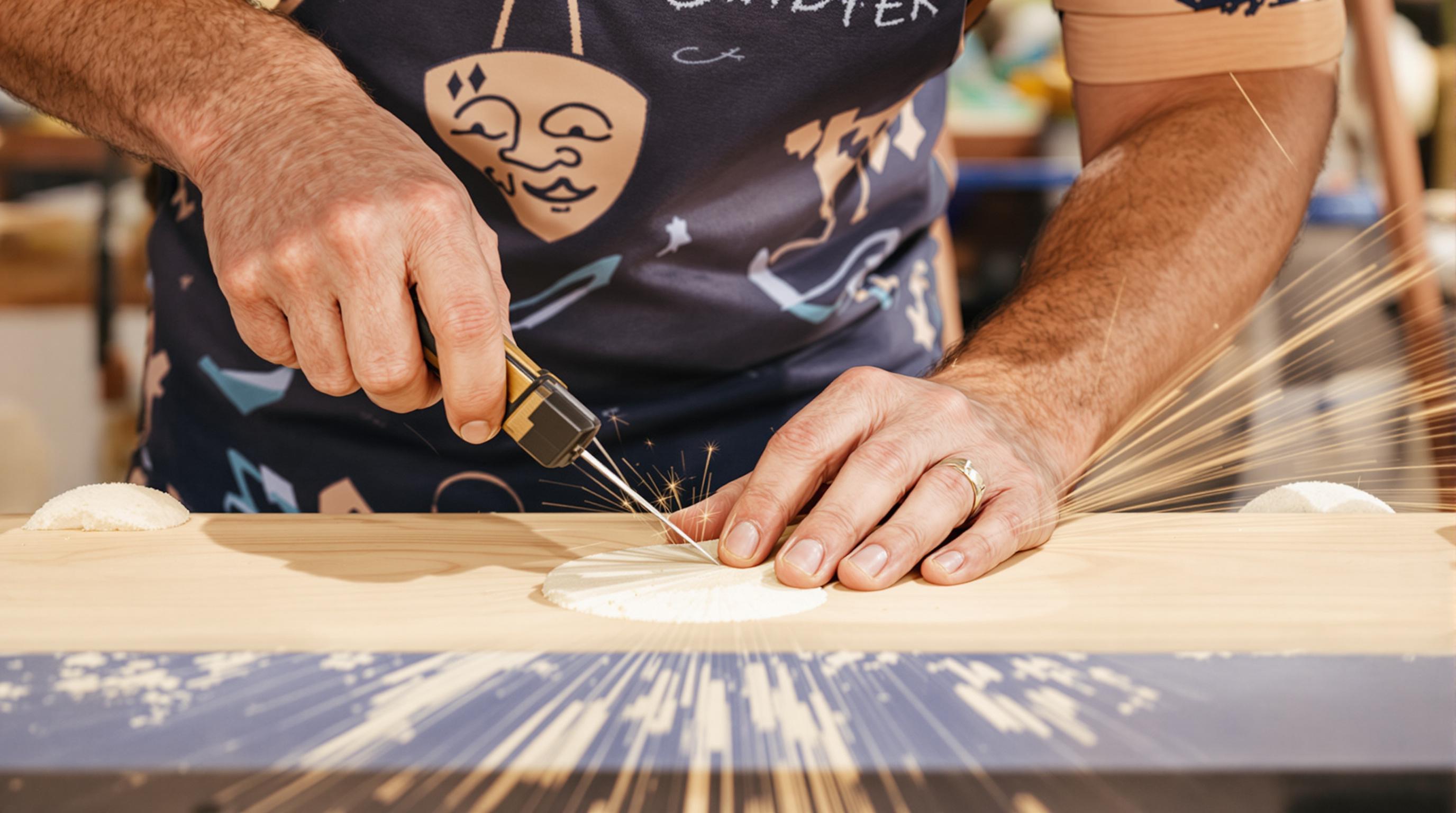Related Articles
- When Ancient Trade Routes Resurface: Unexpected Lessons for Modern Commerce and Global Economic Resilience
- When Artifacts Become Currencies: The Intriguing Trade Between Antiquities and Emerging Markets
- Beyond Borders: Unconventional Partnerships Transforming Trade Strategies in the Age of Globalization
- The Rise of Shadow Economies: How Informal Trade Networks are Disrupting Global Market Structures
- Cryptocurrency and Society: Understanding the Hidden Costs of Digital Assets on Community Well-Being
- The Surprising Role of Cultural Narratives in Shaping Investment Choices and Financial Preferences
10 Unexpected Leadership Skills Drawn from Traditional Craftsmanship That Can Fortify Team Loyalty and Inspire Commitment
10 Unexpected Leadership Skills Drawn from Traditional Craftsmanship That Can Fortify Team Loyalty and Inspire Commitment
10 Unexpected Leadership Skills Drawn from Traditional Craftsmanship That Can Fortify Team Loyalty and Inspire Commitment
1. Patience and Precision
Traditional craftsmanship often requires meticulous attention to detail and a profound sense of patience. Mastering a craft can take years, and this journey teaches leaders the importance of taking time to develop skills and understanding. For leaders, exercising patience can lead to more thoughtful decision-making and foster an environment where team members feel valued for their contributions.
When leaders exemplify patience, teams often mirror this trait. A culture of patience encourages individuals to pursue mastery in their roles, which in turn can boost overall performance. This reflection of craftsmanship instills a deep sense of loyalty among team members, who see their leaders as mentors dedicated to their growth.
Employing patience in leadership also helps to create a safe space for innovation and creativity. Team members are more likely to share ideas without fear of harsh criticism, leading to increased commitment to collective goals.
2. Dedication to Quality
Craftsmanship is synonymous with a dedication to quality and excellence. Leaders who prioritize delivering high-quality outcomes with authenticity inspire their teams to adopt the same mindset. This emphasis on quality nurtures a culture where commitment is rooted in pride and craftsmanship.
Leaders who embrace dedications to quality demonstrate that the process is just as important as the end result. This perspective highlights the value of effort and hard work, leading to increased engagement among team members who appreciate the integrity inherent in their work.
Furthermore, commitment to quality often fosters trust between leaders and their teams. When team members perceive that their leaders genuinely care about the standards they uphold, it reinforces their loyalty and commitment to the mission at hand.
3. Resilience in the Face of Adversity
Craftsmanship is often fraught with challenges. Encountering obstacles and setbacks can lead to frustration, yet those who are committed to their craft develop resilience. Effective leaders embody this trait, which encourages a culture of perseverance among their teams.
Leaders demonstrating resilience teach their teams valuable lessons about confronting adversity with grace. This approach not only boosts morale but also fortifies team loyalty when individuals feel supported during tough times. They are more likely to commit to overcoming challenges together.
Emphasizing resilience in leadership also helps teams navigate change more effectively. Developments in projects or organizational shifts are inevitable, and resilient leaders position their teams to embrace such changes as opportunities for growth.
4. Creativity and Innovation
Master craftsmen frequently innovate, taking their skills to new heights by thinking outside the box. Leaders who foster an environment of creativity encourage team members to explore unconventional solutions, which ultimately leads to innovative outcomes.
By harnessing creativity, leaders can better connect with their teams on a personal level. This emotional connection breeds loyalty as team members feel empowered to bring their unique perspectives to the table, knowing their ideas will be valued.
Inspiration drawn from traditional craftsmanship can be the catalyst for innovation in team dynamics. Empowered by their leaders' encouragement of creativity, team members are more likely to take ownership of their work, leading to an enhanced commitment to achieving common goals.
5. Attention to Collaboration
Collaboration is a cornerstone of traditional craftsmanship. Many crafts require the input and cooperation of different individuals, establishing a clear link between teamwork and high-quality outcomes. Effective leaders who emphasize collaboration nurture loyalty among their teams.
Leaders who actively foster collaboration create an inclusive environment where all voices are heard. This commitment to inclusivity encourages team members to develop a sense of belonging, leading to increased loyalty and commitment to shared objectives.
By drawing from craftsmanship, leaders can demonstrate that every contribution, no matter how small, plays a crucial role in the success of the team. This understanding instills a sense of shared responsibility that is foundational to strong team dynamics.
6. Mastery Through Continuous Learning
Craftsmanship is a lifelong journey of learning and self-improvement. Leaders who commit to continuous growth and encourage their teams to do the same instill a culture of lifelong learning within their organizations. This commitment fosters loyalty as team members seek personal and professional development.
By modeling a growth mindset, leaders can inspire their teams to pursue excellence relentlessly. Encouraging individuals to take risks, explore new skills, and embrace feedback not only promotes personal growth, but also strengthens team commitment to collective success.
Recognizing the importance of continuous learning can also help create an adaptive team environment. In a world where change is the only constant, a commitment to learning ensures that teams remain agile and responsive, further reinforcing loyalty and commitment.
7. Artistry in Crafting Stories
Traditional craftsmanship isn't just about physical creation; it's also about storytelling. Each piece often carries a narrative, reflecting the maker's journey and cultural significance. Leaders who harness storytelling can effectively communicate their vision and mission, inspiring deeper commitment among team members.
Employing storytelling in leadership creates emotional connections. When team members relate to the stories behind their work or the organization's mission, they are more inclined to engage fully with their responsibilities. This emotional investment fosters loyalty that is hard to break.
Storytelling further enhances team cohesion. By sharing anecdotes and experiences, leaders bridge generational and experiential divides, encouraging a culture of understanding and unity within the team.
8. Crafting a Vision
Master craftsmen often have a compelling vision for their work—a mental picture of what they aim to create. Leaders who cultivate a strong vision can inspire their teams to rally around a shared goal. This clarity helps foster commitment and loyalty as team members understand the purpose behind their efforts.
A well-crafted vision acts as a guiding star for teams, especially during challenging times. When individuals share a common goal articulated by their leaders, they are more likely to persist and push through obstacles together, further solidifying their loyalty to the team.
In addition, a strong vision rooted in craftsmanship instills pride in individual contributions. Each team member understands how their work fits into the larger goal, which enhances their commitment and loyalty to both the mission and to one another.
9. Embracing Vulnerability
Craftsmanship requires a level of vulnerability as creators open themselves up to criticism and opportunities for improvement. Leaders who embrace vulnerability foster authentic relationships with their teams, creating a safe space for honest communication and collaboration.
This openness fosters trust, which is essential for loyalty. Team members who feel their leaders are genuine and human are more likely to commit to not only their work but also their colleagues. This shared vulnerability builds a cohesive team dynamic.
Moreover, leaders setting the tone for vulnerability can encourage their teams to do the same. When team members feel comfortable sharing struggles or challenges, solutions can emerge more readily, nurturing commitment to achieving shared goals.
10. Building a Legacy
Craftsmanship is often focused on creating something that withstands the test of time. Leaders who prioritize their legacy instill a sense of purpose among their teams, guiding them to think beyond immediate results and consider the lasting impact of their work.
This long-term perspective fosters commitment, as team members recognize the significance of their contributions. When individuals understand that they are building something larger than themselves, their loyalty and dedication to the team's mission increase exponentially.
Ultimately, building a legacy rooted in craftsmanship not only inspires current team dynamics but also paves the way for future generations of leaders and team members. This forward-thinking mindset cultivates a culture of pride and loyalty that can leave a lasting imprint on the organization.




